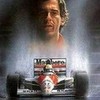wesley123 wrote:It's goal is to reduce drag, allowing higher top speed making overtaking easier.
Right – the goal is to make overtaking easier. This is done by reducing drag.
This is not equal to "maximum possible drag reduction implies maximum possible chance of overtaking". Instead, perhaps "drag reduction when you're not yet in significant dirty air because the car in front isn't moving so fast yet gives more chance of overtaking" or "drag reduction while accelerating causes you to get into the slip stream, multiplying the effect of the drag reduction and making overtaking easier."
Diesel wrote:I do agree with you in a way beelsebob, I'm also not a fan of these activation points halfway up the straight. A better way of doing it might be a time based amount of usage on the straight, so they can deploy it were they like (on the straight) but it'll only last a set time/distance.
That's a remarkably neat idea actually.
Diesel wrote:I agree, it does seem more effective off the back of a slow corner, but not always, and it's nothing to do with hitting the rev limiter. The cars are closer together coming out a slow speed corner because the effect of turbulent air is greatly reduced.
You're right – dirty air through a fast corner preceding the activation zone is a good chunk of the reason. Which is one reason why the Kemmel straight is a terrible idea. The rev limiter is also significant here though – in Spain for example, and I would bet heavily in Belgium, the cars will be scraping the rev limiter at the end of the straight, and will certainly be bumping it with DRS open.


